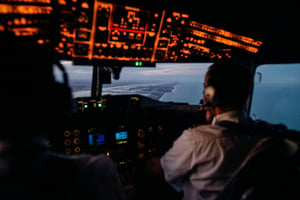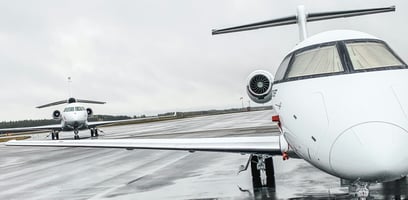The Federal Aviation Administration (FAA) has recently issued a landmark final rule updating the...
Essential Guide for International Flights: How to Be Prepared for Ramp Checks and Ensure Safety Compliance
When flying internationally, particularly from the U.S. to Europe, it's essential to ensure that you're in compliance with all international and local regulations, especially for a potential ramp check. Here’s a step-by-step guide with links to help ensure you're prepared, along with key safety management considerations:
1. Review EASA (European Union Aviation Safety Agency) Requirements
- The European Union Aviation Safety Agency (EASA) oversees civil aviation safety in Europe, and they have specific rules for foreign operators (non-EU aircraft).
- Ensure your aircraft and operations comply with EASA’s Third Country Operators (TCO) approval. You can check your operator’s status or apply via the EASA TCO Webite.
- Required documents include aircraft registration, airworthiness certificates, and insurance, and you may be asked to show compliance with safety management requirements, including risk mitigation measures.
2. Know ICAO Standards
- International flights must comply with the standards of the International Civil Aviation Organization (ICAO). Ensure compliance with:
- Annex 6 - Operation of Aircraft (Safety Management Systems are included here)
- Annex 8 - Airworthiness of Aircraft
- Many countries will want to see your Safety Management System (SMS) in action, and having up-to-date safety performance data can provide evidence of this.
3. Safety Management and Risk Assessment Considerations
- Many European authorities, as well as EASA, may ask to see evidence that you are actively managing risks through a formal Safety Management System (SMS). In particular, they may request:
- Safety Performance Indicators (SPI): Are you tracking and monitoring risks and safety hazards?
- Safety Performance Targets (SPT): What goals have you set for maintaining or improving safety?
- Risk Assessments and Mitigation Reports: Do you have documented risk assessments for your flights, aircraft, and operational activities?
Preflight Mitigator can assist with this:
- Preflight Mitigator offers a comprehensive SMS platform tailored to aviation safety. The software allows you to track and report on SPIs, manage hazards, and complete risk assessments, ensuring you’re fully covered in case of a ramp check.
- With Preflight Mitigator, you can easily generate reports to show compliance with safety standards, providing inspectors with evidence that your operations are actively monitored and risk-controlled.
4. Check Entry Requirements for Destination Countries
- Different European countries may have specific entry requirements regarding customs, flight plans, and required documentation.
- You can find the specific requirements of each country in their AIP (Aeronautical Information Publication). AIPs are available through services like:
- Eurocontrol’s NM (Network Manager) Briefing also provides valuable tools for flight planning in European airspace.
5. Have Required Documentation Ready
For a ramp check, ensure you have the following documents easily accessible:
- Aircraft Registration Certificate
- Airworthiness Certificate
- Insurance Certificate (ensure it covers international flights, including Europe)
- Radio Station License (for international operations) – FCC Radio Licenses
- Pilot Certificates and Medicals (ensure they’re ICAO-compliant)
- Maintenance Logbooks (recent maintenance activities)
- Noise Certificate (this is particularly relevant in Europe; check with EASA)
- Weight and Balance Documentation
- Flight Plan and Weather Briefing (proof that you’ve complied with operational requirements, available from ForeFlight or SkyVector)
- Safety Management System Reports: Consider having copies of recent risk assessments, hazard reports, and SPI/Safety Target data ready to present in case of an inspection. (available from Preflight Mitigator)
6. Understand Customs and Immigration Procedures
- Europe has various customs and immigration rules for pilots and passengers. For flights within the Schengen Area, make sure to understand the visa requirements. More details on Schengen rules can be found on the European Commission’s official website.
- You can also get up-to-date customs and immigration details from your handling agent or local airport.
7. Coordinate with Your Handling Agent
- Handling agents assist in preparing all the necessary regulatory paperwork, fuel, fees, and permits. Some popular handling service providers include:
8. Use Resources for Pilots Flying Internationally
- AOPA International Flight Resources: The Aircraft Owners and Pilots Association (AOPA) provides a comprehensive guide on international flying.
- NBAA International Operations: The National Business Aviation Association (NBAA) offers extensive resources on international operations.
- Eurocontrol: Use Eurocontrol’s Flight Planning Tools for flights entering European airspace.
Final Thoughts:
When preparing for an international flight, it’s essential to ensure all operational and regulatory bases are covered, especially in the event of a ramp check. Compliance with EASA regulations, particularly under their Third Country Operator (TCO) rules, is crucial to operating in European airspace. Additionally, meeting ICAO standards around Safety Management Systems (SMS), airworthiness, and flight operations is a fundamental requirement. Having your Safety Management System in place, with clear Safety Performance Indicators (SPIs), Safety Performance Targets (SPTs), and risk mitigation reports, will further demonstrate your proactive management of risks. A platform like Preflight Mitigator can support this by helping you track risks, manage hazards, and produce reports that show compliance with international safety standards.
It’s equally important to check the entry requirements for your destination countries by reviewing the Aeronautical Information Publications (AIPs) and customs regulations, ensuring all necessary documentation—such as aircraft certificates, pilot licenses, insurance, and SMS reports—is readily available. Additionally, be aware of specific customs and immigration rules, especially in the Schengen Area, and coordinate with a reputable handling agent to help with the necessary paperwork and logistics. By utilizing resources such as AOPA, NBAA, and Eurocontrol, you can stay informed about the latest international flying requirements. With thorough preparation and the right tools in place, you can confidently manage your operations and be ready for any potential ramp checks during your international flights.



